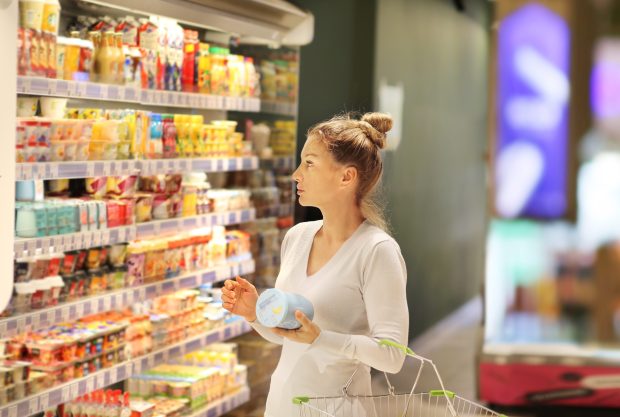US Grocers Seize on 33% Customer Satisfaction Bump from Coupon Usage

With coupons improving U.S. consumers’ shopping experiences, grocers are stepping up their discounting efforts.
American shoppers’ satisfaction is significantly improved by coupon usage. The “2023 Global Digital Shopping Index,” a PYMNTS and Cybersource collaboration, which draws from consumer panels from six countries spanning more than 13,000 participants, finds that 80% of U.S. shoppers who used coupons were very or extremely satisfied with their experience. In contrast, only 60% of those who did not use coupons said the same.
As such, using coupons makes consumers 33% more likely to be highly satisfied with their shopping experience.
This finding is especially notable, considering the rapid uptick in adoption and availability in the recent past. The study found that 70% of U.S. shoppers reported using and being aware of coupons, promo codes and rewards in 2022, up from 59% in 2021.
Grocers, noting the power of coupons to drive satisfaction for U.S. consumers, have been looking to offer more deals and discounts. B.J.’s Wholesale Club, for one, noted on an earnings call in November that “digitally enabled” sales rose 43% year over year, helped by the brand’s push to move coupons online.
“Five years ago, we were worried about the fact that our primary promotional product was paper coupons, and nobody loves paper coupons,” President and CEO Bob Eddy said. “Now, maybe three-quarters of our promotion is done digitally. We’ve made tremendous strides both in product promotion and convenience as we’ve invested in digital, and we’ll continue to do that. The members that engage with us digitally are our best members.”
Moreover, coupons can be the deciding factor as to how consumers shop — online or in stores.
In a recent interview with PYMNTS, Barbara Connors, vice president of commercial insights at 84.51°, the marketing insights subsidiary of grocery giant Kroger, shared how increasing cost-sensitivity affects the adoption of eCommerce channels.
“We know that very price-sensitive customers are those that have lower engagement with eCommerce and are lower on the adoption curve, and those are the customers that are most likely to go into a store,” Connors said. “And one of the reasons is because they are looking for sales, deals and coupons, and it is easier for them to do that in-store than online.”
Technology providers have been seizing the increased demand for coupons as well. Grocery aggregator Instacart announced toward the end of last year the launch of its Promotions suite of advertising offerings for consumer packaged goods (CPG) brands, offering self-service options for showing consumers personalized deals, promotions and coupons.
“With the average cost of groceries going up, we’re proud to unlock more ways for consumers to save money and connect with their favorite brands and retailers via Instacart,” Ali Miller, vice president of ads product at Instacart, said in a statement at the time.
Grocers believe that coupons are essential to consumer loyalty. Research from PYMNTS’ study “Big Retail’s Innovation Mandate: Convenience and Personalization,” created in collaboration with ACI Worldwide, found that 74% of grocers think that consumers would be very or extremely likely to switch merchants if digital coupons and rewards were not provided.
Plus, many consumers say the same. Findings from PYMNTS’ study “Decoding Customer Affinity: The Customer Loyalty to Merchants Survey 2022,” created in collaboration with Toshiba Global Commerce Solutions, noted that 42% of grocery shoppers stated that the availability of loyalty programs with rewards they like would improve their loyalty to merchants.
